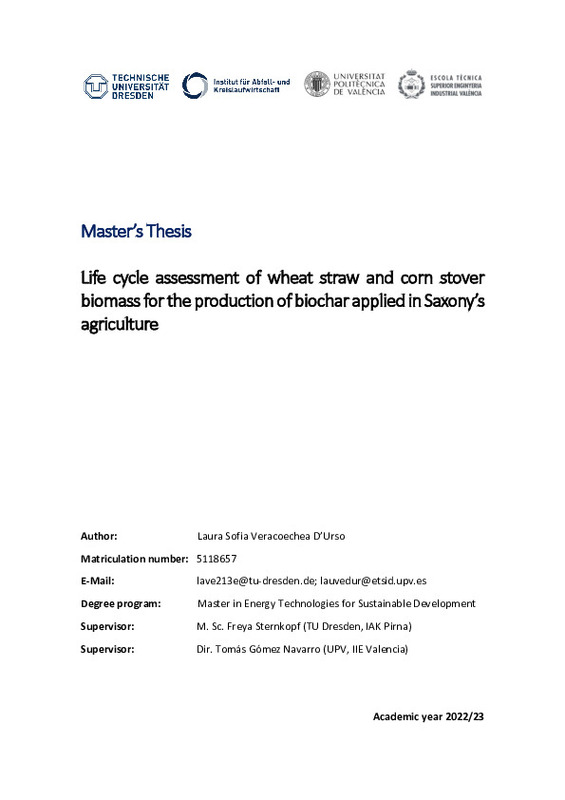JavaScript is disabled for your browser. Some features of this site may not work without it.
Buscar en RiuNet
Listar
Mi cuenta
Estadísticas
Ayuda RiuNet
Admin. UPV
Life cycle assessment of wheat straw and corn stover biomass for the production of biochar applied in Saxony's agriculture
Mostrar el registro completo del ítem
Veracoechea D'urso, LS. (2023). Life cycle assessment of wheat straw and corn stover biomass for the production of biochar applied in Saxony's agriculture. Universitat Politècnica de València. http://hdl.handle.net/10251/194706
Por favor, use este identificador para citar o enlazar este ítem: http://hdl.handle.net/10251/194706
Ficheros en el ítem
Metadatos del ítem
| Título: | Life cycle assessment of wheat straw and corn stover biomass for the production of biochar applied in Saxony's agriculture | |||
| Otro titulo: |
|
|||
| Autor: | Veracoechea D'Urso, Laura Sofia | |||
| Director(es): | Sternkopf, Freya | |||
| Entidad UPV: |
|
|||
| Fecha acto/lectura: |
|
|||
| Resumen: |
[ES] Tras la investigación de las consecuencias del cambio climático sobre los suelos de la región de Sajonia en Alemania y la necesidad de su adaptación a través de productos, como el biocarbono, que conservan los nutrientes ...[+]
[EN] Biochar is a porous carbon-rich material which is produced by the pyrolysis of biomass along
with bio-oil and syngas. Applied, e.g., in agricultural soils acts a Negative Emission Technology
(NET) creating a long-term ...[+]
|
|||
| Palabras clave: |
|
|||
| Derechos de uso: | Reserva de todos los derechos | |||
| Editorial: |
|
|||
| Titulación: |
|
|||
| Tipo: |
|
Localización
recommendations
Este ítem aparece en la(s) siguiente(s) colección(ones)
-
ETSII - Trabajos académicos [10404]
Escuela Técnica Superior de Ingenieros Industriales







